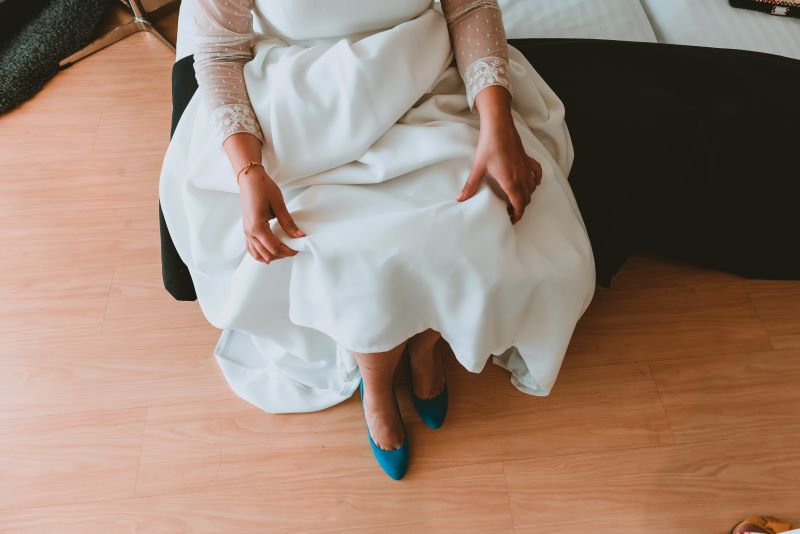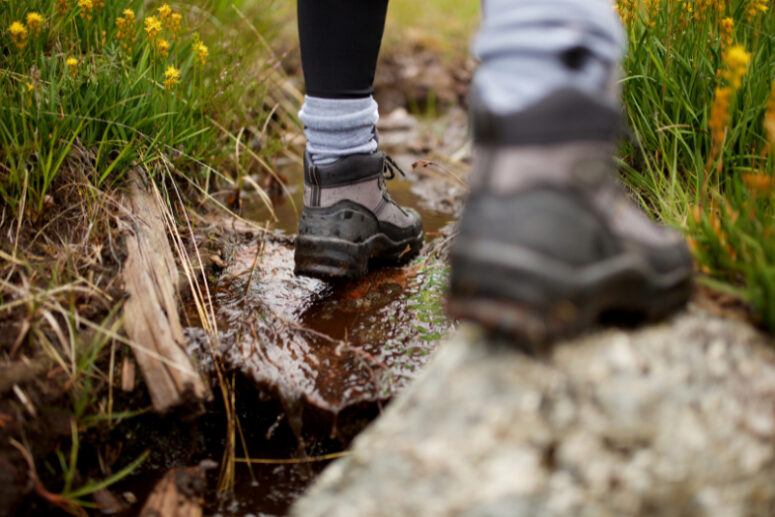Also known as retrocalcaneal exostosis or Mulholland deformity, Haglund’s deformity is a common medical condition. However, it continues to also be incorrectly understood by many. Haglund’s deformity affects the bones and soft tissues in one or both of your foot heels. Other known names for this particular condition include retrocalcaneal bursitis or “pump bump.” Haglund’s deformity exhibits as a bump on the back of a heel. This condition is an abnormality or deformity of the soft tissues and bone in one or both of your feet. The description and essential details of the medical condition people know today as Haglund’s deformity, or Haglund’s syndrome, first came from Patrick Haglund in 1927. The pain you can experience from this condition can also be more noticeable or present after rest. Lateral radiographs and a clinical evaluation can provide a reliable diagnosis of Haglund’s syndrome. In this article, we’ll discuss what causes Haglund’s deformity, as well as more details of where and how the pain can exhibit for you.
In this article, we’ll also discuss some useful Haglund’s deformity exercises. You deserve to experience the quickest, easiest, and most effective treatment and relief for your efforts. With quick and lasting relief to maximize your specific budget and efforts, you can more quickly resume a high quality of life, or even experience a higher quality of life than before you developed Haglund’s deformity and the associated pain and movement and activity affectedness. You can generally treat this condition with a range of conservative methods. Available Haglund’s deformity exercises and treatment methods from the caring professionals at the Foot and Ankle Specialists of Illinois can make all the difference for your health and wellness, including providing you increased flexibility, mobility, strength, and more in the affected area.
 The Cause of Haglund’s Deformity
The Cause of Haglund’s Deformity
Haglund’s deformity or Haglund’s syndrome is an uncomfortable or painful enlargement developing as a bump on the back of a heel. This uncomfortable or painful abnormality can become exasperated when walking or otherwise moving. It can also become irritated as you wear different shoe gear. This bone abnormality can develop on the back of a foot heel. It can consequently aggravate the retrocalcaneal bursa.
The retrocalcaneal bursa is a fluid-filled sac existing on the back of your heel between the calcaneus and Achilles tendon. The retrocalcaneal bursa can become swollen and inflamed, essentially becoming the medical condition known as bursitis. Haglund’s deformity, also known as Haglund’s syndrome, most often affects women.
Enlargement of the bone section on your heel where the Achilles tendon inserts essentially triggers this unique medical condition. Soft tissue near the back of your heel becomes irritated. It becomes irritated as the bony, large lump rubs against uncomfortable or rigid shoes. It’s vital to always select and wear the best shoes for your comfort, support, and given activities. Any shoes you wear on a regular or consistent basis should be attuned to your activities.
The specific etiology, or what causes Haglund’s deformity, is not particularly widely or well known. However, some of the most probable causes include a high arch of the foot, a tight Achilles tendon, and your heredity. While Haglund’s deformity more often affects women than men, middle age is the most common age range.
 Haglund’s Deformity Treatment Methods
Haglund’s Deformity Treatment Methods
As aforementioned, you can treat the bump on the back of a heel using various conservative methods. Other conservative treatment methods include altering the heel height or support in your shoewear or taking attuned anti-inflammatory drugs. You can also engage in orthosis and/or other physiotherapy.
Nonsteroidal, anti-inflammatory drugs, or NSAIDs, in this case, include ibuprofen and other similar drugs. The RICE method (rest, ice, compression, and elevation in that order) can also help. Orthosis in this particular case involves correcting the present medical disorder with the use of braces and other specific devices to provide support and otherwise correct physical alignment in the area. These braces and other corrective and supportive devices are known as orthotics.
When you’re looking for Haglund’s deformity exercises to help treat or relieve your current condition, some of the top exercises to consider engaging in on a consistent or regular basis include stretching exercises to work to relieve the present tension in your Achilles tendon area. They can be especially helpful for people with a tight heel cord.
Heel raises involve standing on level ground and raising your heels, with the balls of your feet supporting your weight. Hold the position for a few seconds before dropping back to a standing position each round. Heel drops involve standing on a step with your heels off the step’s edge. Bring one foot up behind you. Allow the back of your other foot to fall slightly over the step’s edge and hold for a few seconds before returning to the original position each round. Other exercises include heel cord stretches and towel stretches for flexibility and relief.
 Diagnosing and Treating Haglund’s Deformity
Diagnosing and Treating Haglund’s Deformity
When you have a bump on the back of a heel, it can make all the difference to know the details of Haglund’s deformity, including what causes Haglund’s deformity and some of the most effective and lasting treatment methods available. For a reliable, expert diagnosis and resulting treatment plan to maximize and reward your budget and efforts, connect with the Foot and Ankle Specialists of Illinois in Algonquin.

